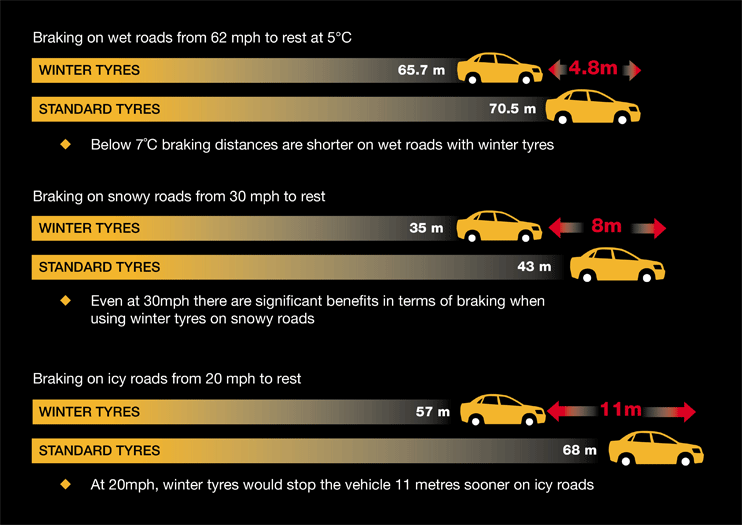When Should You Switch to Winter Tyres?
Timing is everything when it comes to winter tyres. It’s recommended to make the switch when temperatures consistently drop to 7°C or lower. Winter tyres perform optimally in colder weather, ensuring a safer driving experience.
- Key Tip: Look for the snowflake on a mountain symbol on the sidewall – this indicates the tyre meets the required winter specifications.
- M+S Marking: Tyres marked with ‘M+S’ are designed for mud and snow, but remember, this doesn’t always mean it’s a winter tyre.

Why Winter Tyres Are a Must This Winter
- Superior Traction on Snow and Ice: With a specialist tread pattern, winter tyres feature grooves and sipes that provide better grip on snow-covered or icy roads, giving you improved control and stability.
- Enhanced Grip in Low Temperatures: Designed with a special compound that remains supple even at low temperatures, winter tyres maintain optimal grip on cold roads, reducing braking distances and helping you stop safely in winter conditions.
- Shorter Braking Distances: Unlike summer tyres, which become stiff in cold temperatures, winter tyres remain flexible, allowing you to stop quicker and more safely in snowy or icy conditions.
When to Choose Winter Tyres - Do You Need Them?
If your area regularly experiences temperatures below 7°C or severe winter conditions, winter tyres are essential for optimal safety and performance. Ensure you stay safe on the road with tyres that are designed to handle challenging winter conditions.
If your area experiences severe winter weather regularly, we highly recommend switching to winter tyres. They offer superior handling, better stability, and safer braking in cold, icy, and snowy conditions.
Winter Tyres in Action
Take a look at this video from TyreSafe to watch how winter tyres perform in action:
Order Your Winter Tyres Today
Stay safe and perform at your best this winter with winter tyres from Merityre. Order online now and enjoy fast delivery and professional fitting at your local branch. Stay confident on the road with tyres designed to give you optimal safety, grip, and control in all winter conditions.